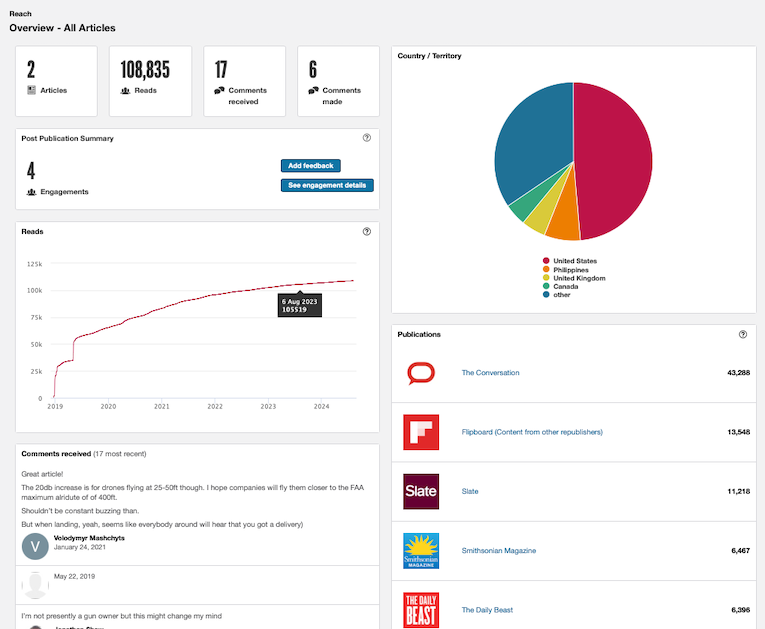[Research Sample 4]
In an effort to engage a broader public in my Acoustic Ecology research I have been working with Professor Steven Beschloss's Narrative Storytelling initiative to explore a broad approach to communicating the social impact of my research. Several more publication and media projects are planned.
—
In an effort to engage a broader public in my Acoustic Ecology research I have been working with Professor Steven Beschloss's Narrative Storytelling initiative to explore a broad approach to communicating the social impact of my research. Several more publication and media projects are planned.
—

Part of my research mission is to make a positive public impact on building the cultural capital required to make the substantial changes required for sustainable climate change mitigation.
Listening is a powerful skill an at the core of my work in acoustic ecology and music composition and performance.
In late 2018, Professor Steven Beschloss encouraged me, through his Narrative Storytelling initiative explore my broader mission through public media channels.
The result was an article in The Conversation titled Listening to nature: How sound can help us understand environmental change. At the time of submitting, the article had gained 45,816 reads, and been republished internationally. A series of radio interviews eventuated. The article is considered an "ever green" and the readership continues to rise.
A follow up article in 2019 Drone delivery and environmental sound yielded 25,429 reads at time of writing.
Both articles have been republishing by such venues as the Smithsonian Magazine, Slate, The Daily Beast, MIT Undark, the Daily Mail and generated broad international impact with a plethora of interview requests in Canada, Australia, Europe and the U.S..
The editor at The Conversation informed me that these are "ever green" articles and will have a long life and continue to attract a broad readership. I am delighted these articles have had such impact. They instigated radio interviews in the US, Canada, Australia and the UK and I received many emails from readers who mentioned that my article caused them to consider the environmental sound around them, urban or otherwise with fresh ears and more weight. This speaks directly to my mission to engage the broader public in the value of my research.
A project with PBS is in discussion
Listening is a powerful skill an at the core of my work in acoustic ecology and music composition and performance.
In late 2018, Professor Steven Beschloss encouraged me, through his Narrative Storytelling initiative explore my broader mission through public media channels.
The result was an article in The Conversation titled Listening to nature: How sound can help us understand environmental change. At the time of submitting, the article had gained 45,816 reads, and been republished internationally. A series of radio interviews eventuated. The article is considered an "ever green" and the readership continues to rise.
A follow up article in 2019 Drone delivery and environmental sound yielded 25,429 reads at time of writing.
Both articles have been republishing by such venues as the Smithsonian Magazine, Slate, The Daily Beast, MIT Undark, the Daily Mail and generated broad international impact with a plethora of interview requests in Canada, Australia, Europe and the U.S..
The editor at The Conversation informed me that these are "ever green" articles and will have a long life and continue to attract a broad readership. I am delighted these articles have had such impact. They instigated radio interviews in the US, Canada, Australia and the UK and I received many emails from readers who mentioned that my article caused them to consider the environmental sound around them, urban or otherwise with fresh ears and more weight. This speaks directly to my mission to engage the broader public in the value of my research.
A project with PBS is in discussion
Below is a screen capture of the readership data at May 6, 2020
